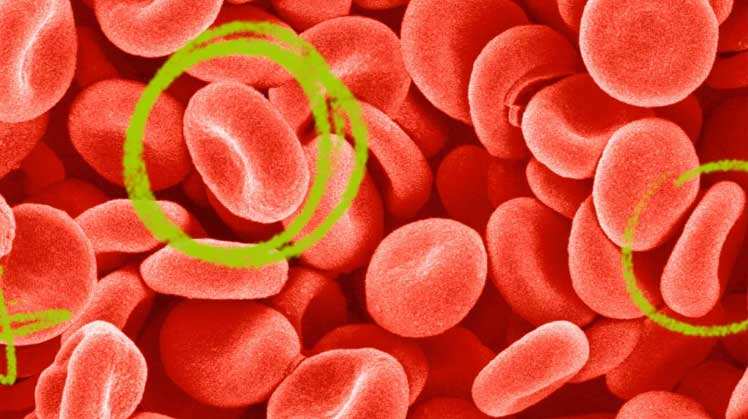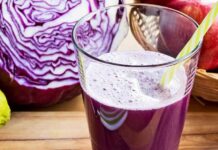
Hemoglobin is a protein found in the red blood cells. These cells are responsible for carrying oxygen around the body.
In addition to transporting oxygen, hemoglobin carries carbon dioxide out of the cells and into the lungs. Carbon dioxide is then released as a person exhales. Having low hemoglobin can make it difficult for the body to perform these functions.
In this article, learn how to increase hemoglobin levels naturally. We also look at methods of testing and what the results show.
How To Increase Hemoglobin
A person can raise their hemoglobin levels at home by:
1. Increasing Iron Intake
A person with reduced levels of hemoglobin may benefit from eating more iron-rich foods. Iron works to boost the production of hemoglobin, which also helps to form more red blood cells.
Iron-rich foods include:
- meat and fish
- soy products, including tofu and edamame
- eggs
- dried fruits, such as dates and figs
- broccoli
- green leafy vegetables, such as kale and spinach
- green beans
- nuts and seeds
- peanut butter
2. Increasing Folate Intake
Folate is a type of vitamin B that plays an essential part in hemoglobin production. The body uses folate to produce heme, a component of hemoglobin that helps to carry oxygen.
If a person does not get enough folate their red blood cells will not be able to mature, which could lead to folate-deficiency anemia and low hemoglobin levels.
Good sources of folate include:
- beef
- spinach
- rice
- peanuts
- black-eyed peas
- kidney beans
- avocadoes
- lettuce
Folate supplements are available for purchase online.
3. Maximizing Iron Absorption
Consuming iron in foods or supplements is important, but a person should also help their body to absorb that iron.
Foods rich in vitamin C, such as citrus fruits, strawberries, and leafy green vegetables, can boost the amount of iron absorbed. Taking a vitamin C supplement may also help.
Vitamin A and beta-carotene can aid the body in absorbing and using iron.
Foods rich in vitamin A include:
- fish
- liver
- squash
- sweet potatoes
- kale and collards
Foods high in beta-carotene include yellow, red, and orange fruits and vegetables, such as:
- carrots
- sweet potatoes
- squash
- cantaloupes
- mangoes
While vitamin A supplements can help the body to process iron, the vitamin is dangerous if too much is consumed.
Excess vitamin A may lead to a condition known as hypervitaminosis A. This can cause symptoms such as bone and joint pain, severe headaches, and increased pressure within the brain.
4. Taking Iron Supplements
A doctor may advise a person with extremely low levels of hemoglobin to take iron supplements. The dosage will depend on a person’s levels.
It is important to note that too much iron can be dangerous. It may cause hemochromatosis, which can lead to liver disease and side effects such as constipation, nausea, and vomiting.
Supplements will cause levels of iron to increase gradually over a few weeks. A doctor may recommend taking the supplements for several months, to increase the body’s iron stores.
Iron supplements are available for purchase online.
Normal Ranges
A doctor will check for low hemoglobin with a blood test.
Low hemoglobin is diagnosed when a man has less than 13.5 grams per deciliter (g/dL) of hemoglobin in the blood, or when a woman has less than 12 g/dL.
A person may have a low hemoglobin level for a variety of reasons, including:
- iron-deficiency anemia
- pregnancy
- problems with the liver or kidneys
- chronic disease
It is possible to have naturally reduced hemoglobin levels without an underlying cause. Some may even have low hemoglobin and experience no symptoms or indications.
With a doctor’s guidance, a person can boost their levels of hemoglobin to fall within a normal range. Normal ranges are:
- 13.5 to 17.5 g/dL for men
- 12 to 15.5 g/dL for women
Appropriate hemoglobin levels for children vary depending on age. Anyone concerned about a child’s hemoglobin levels should speak with a doctor.
People with very low hemoglobin levels may need additional treatment if taking supplements and changing the diet do not show sufficient results.
Symptoms
Symptoms of extremely low levels of hemoglobin include:
- a fast or irregular heartbeat
- pale skin and gums
- fatigue
- muscle weakness
- frequent or unexplained bruising
- reoccurring headaches
Causes Of Low Hemoglobin
A person with low hemoglobin may have anemia. Common causes of anemia include:
- being deficient in iron, vitamin B-12, or folate
- substantial blood loss
- cancers that affect the bone marrow, such as leukemia
- kidney disease
- liver disease
- hypothyroidism, or a thyroid gland that does not produce enough hormones
- thalassemia, a hereditary disease that prevents hemoglobin from functioning properly
- sickle cell anemia, a genetic disorder that causes a reduction in red blood cells and hemoglobin
Low hemoglobin levels can also be caused by:
- lung disease
- excessive smoking
- burns
- extreme physical exercise
Takeaway
Many people can boost their hemoglobin levels with dietary changes and supplements. Speak with a doctor to determine the correct supplement dosage.
If hemoglobin levels remain low, a person may need further treatment, such as a blood transfusion.
Depending on the cause of low hemoglobin and the treatments attempted, it may take up to a year for levels to reach a healthy range.
Sources:
- (2018, April 17)
http://irondisorders.org/absorption/ - Abbaspour, N., Hurrell, R., & Kelishadi, R. (2014, February). Review on iron and its importance for human health. Journal of Research in Medical Sciences, 19(2), 164–174
https://www.ncbi.nlm.nih.gov/pmc/articles/PMC3999603/ - CBC with differential, blood. (n.d.)
http://www.mayomedicallaboratories.com/test-catalog/Clinical+and+Interpretive/9109 - (2018, March 2)
http://ods.od.nih.gov/factsheets/Folate-HealthProfessional/ - (2018, April 16)
http://labtestsonline.org/understanding/analytes/hemoglobin/tab/sample/ - Hemoglobin and the functions of iron. (n.d.)
http://ucsfhealth.org/education/hemoglobin_and_functions_of_iron/ - Hurrell, R., & Egli, I. (2010, March 3). Iron bioavailability and dietary reference values. The American Journal of Clinical Nutrition, 91(5), 1461S–1467S
https://academic.oup.com/ajcn/article/91/5/1461S/4597424 - (2018, March 2)
http://ods.od.nih.gov/factsheets/Iron-HealthProfessional/ - Iron deficiency anaemia. (2018, January 12)
https://www.nhs.uk/conditions/iron-deficiency-anaemia/ - Johnson, L. E. (n.d.). Vitamin A
https://www.msdmanuals.com/en-gb/home/disorders-of-nutrition/vitamins/vitamin-a - Lands, R., & Isang, E. (2017, January 4). Secondary hemochromatosis due to chronic oral iron supplementation. Case Reports in Hematology, 2017, 2494167
https://www.hindawi.com/journals/crihem/2017/2494167/ - Michelazzo, F. B., Oliveira, J. M., Stefanello, J., Luzia, L. A., & Rondó, P. H. C. (2013, November 7). The influence of vitamin A supplementation on iron status. Nutrients, 5(11), 4399–4413
http://www.mdpi.com/2072-6643/5/11/4399 - Red blood cell count. (2015, October 2)
https://www.nhs.uk/conditions/Red-blood-count/ - Underactive thyroid (hypothyroidism). (2015, May 11)
https://www.nhs.uk/conditions/underactive-thyroid-hypothyroidism/ - Understanding your test results. (n.d.)
https://www.myeloma.org/sites/default/files/images/publications/UnderstandingPDF/u-testresults.pdf - West, A. R., & Oates, P. S. (2008, July 14). Mechanisms of heme iron absorption: Current questions and controversies. World Journal of Gastroenterology, 14(26), 4101–4110
https://www.ncbi.nlm.nih.gov/pmc/articles/PMC2725368/
Important Notice: This article was published at www.medicalnewstoday.com by Bethany Cadman where all credits are due. Medically reviewed by Daniel Murrell, M.D.
Disclaimer
The watching, interacting, and participation of any kind with anything on this page does not constitute or initiate a doctor-patient relationship with Dr. Farrah™. None of the statements here have been evaluated by the Food and Drug Administration (FDA). The products of Dr. Farrah™ are not intended to diagnose, treat, cure, or prevent any disease. The information being provided should only be considered for education and entertainment purposes only. If you feel that anything you see or hear may be of value to you on this page or on any other medium of any kind associated with, showing, or quoting anything relating to Dr. Farrah™ in any way at any time, you are encouraged to and agree to consult with a licensed healthcare professional in your area to discuss it. If you feel that you’re having a healthcare emergency, seek medical attention immediately. The views expressed here are simply either the views and opinions of Dr. Farrah™ or others appearing and are protected under the first amendment.
Dr. Farrah™ is a highly experienced Licensed Medical Doctor certified in evidence-based clinical nutrition, not some enthusiast, formulator, or medium promoting the wild and unrestrained use of nutrition products for health issues without clinical experience and scientific evidence of therapeutic benefit. Dr. Farrah™ has personally and keenly studied everything she recommends, and more importantly, she’s closely observed the reactions and results in a clinical setting countless times over the course of her career involving the treatment of over 150,000 patients.
Dr. Farrah™ promotes evidence-based natural approaches to health, which means integrating her individual scientific and clinical expertise with the best available external clinical evidence from systematic research. By individual clinical expertise, I refer to the proficiency and judgment that individual clinicians acquire through clinical experience and clinical practice.
Dr. Farrah™ does not make any representation or warranties with respect to the accuracy, applicability, fitness, or completeness of any multimedia content provided. Dr. Farrah™ does not warrant the performance, effectiveness, or applicability of any sites listed, linked, or referenced to, in, or by any multimedia content.
To be clear, the multimedia content is not intended to be a substitute for professional medical advice, diagnosis, or treatment. Always seek the advice of your physician or other qualified health providers with any questions you may have regarding a medical condition. Never disregard professional medical advice or delay in seeking it because of something you have read or seen in any website, video, image, or media of any kind. Dr. Farrah™ hereby disclaims any and all liability to any party for any direct, indirect, implied, punitive, special, incidental, or other consequential damages arising directly or indirectly from any use of the content, which is provided as is, and without warranties.








